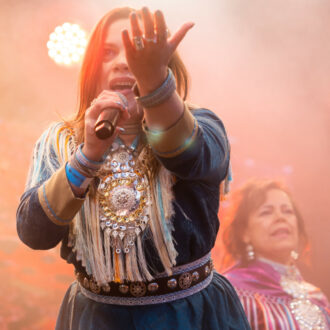“Gifted” is a word that truly applies to Maria Kalaniemi. Her professional career started in 1983, when she won the first-ever Golden Accordion competition and began studying folk music at the renowned Sibelius Academy in Helsinki.
Kalaniemi has become a revered musician not only because of her versatility, but because of her original playing style. Her playing is highly distinctive, flowing like a gentle creek or a breeze in the trees. It has been compared to the passionate Portuguese vocal style called fado.
Kalaniemi herself calls her compositions “bellow songs” that she creates by “painting landscapes of feeling.”
“It’s something I understood as a child,” she says. “I saw the emotional reaction my family had when listening to Finnish schlager [a type of pop music] and accordion tunes, and that made a magical impression. That’s when I realised that this was my soul music, the kind of tradition I would carry in my heart for the rest of my life.”
The accordion has a peculiar history in Finland. The instrument arrived in Finland in the mid-1800s, and in the beginning of the 1900s, the common people embraced it as a primary accompaniment instrument for different festivities. On the other hand, the accordion’s sound was considered too rough for highbrow society, and it was even banned from churches for a while.
Despite this reputation, you can almost consider the accordion the founding instrument of Finnish popular culture. It was featured in countless popular recordings and films up until the 1960s, when its position was challenged by rock and roll.





